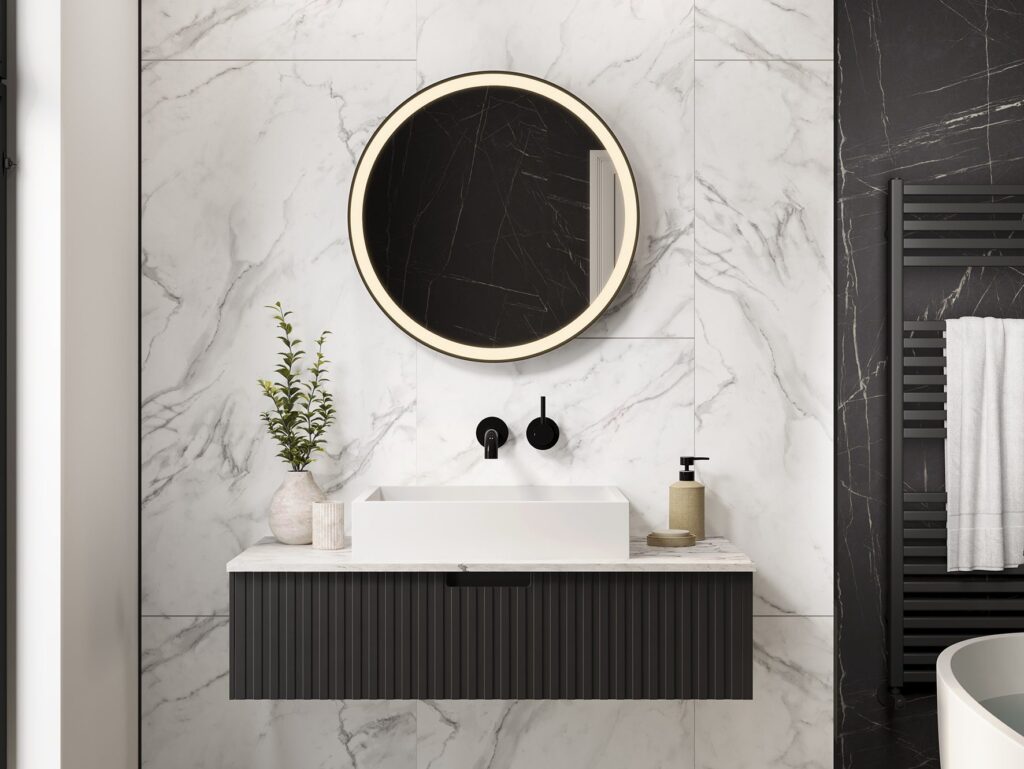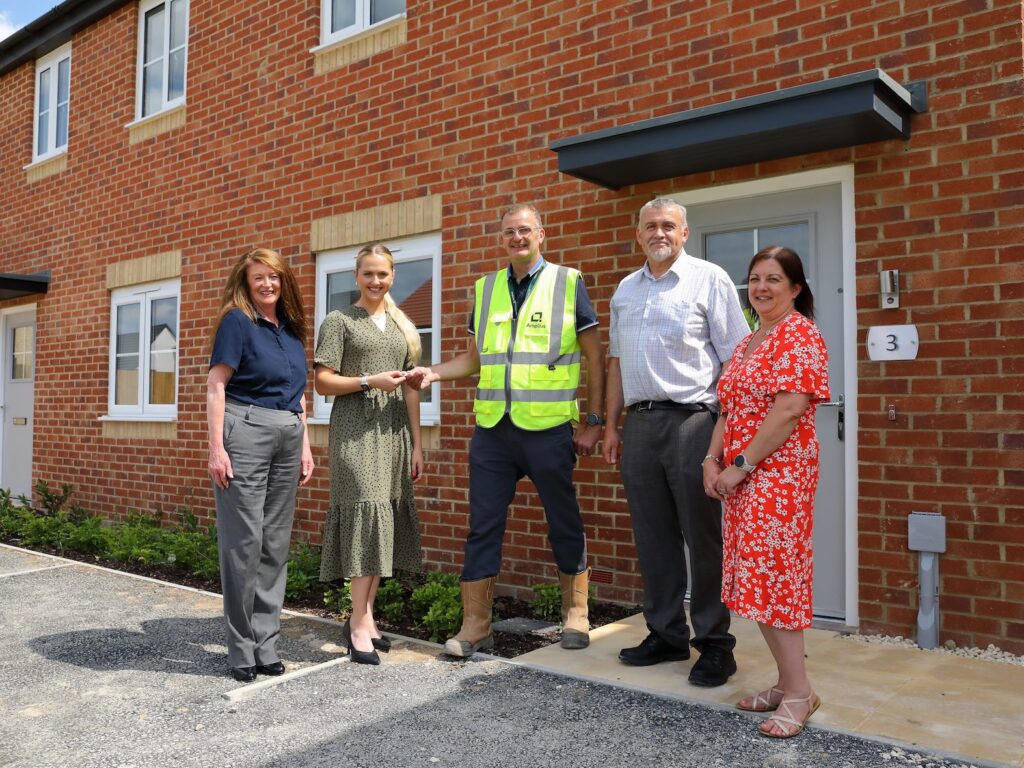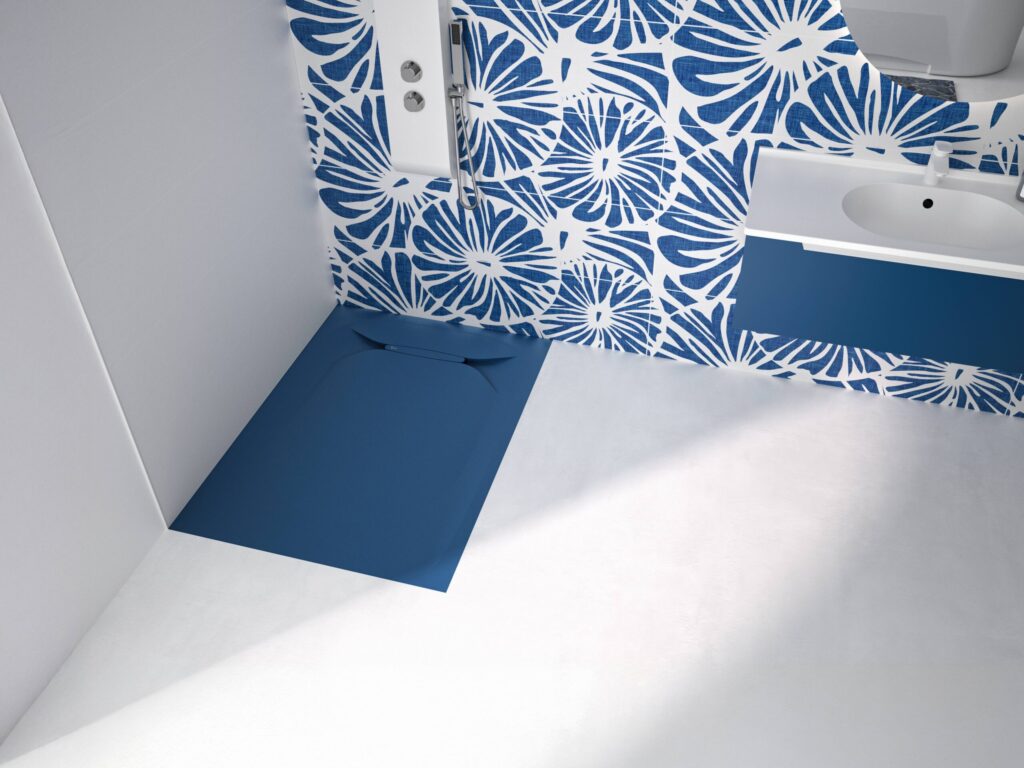Showhome takes a look at the different approaches and innovations in roofing through process, material and objective to achieve efficiency and sustainability
Roofing systems and materials have undergone lots of transformations over the years. The basic function of a roof is to provide a covering for your home, protecting it from external factors. With time, however, roofing technology has evolved substantially, and new roofing systems can carry out other extended functions.
Investing in a new roof is a worthy course. If the roof comes with the latest technology, you are set to enjoy such benefits as a longer lifespan, resistance to harsh weather, and energy efficiency. These innovations and many more technological advancements are slowly taking over the roofing industry.
According to latest research by Glenigan, overall private housing starts are forecast to increase 53% throughout 2021, with the first five months of the year increasing 70% when compared with 2020’s performance. As the industry continues to experience a significant uplift, new materials and processes have evolved that could benefit the industry. So, why could developers choose a process such as interlocking concrete tiles to increase site efficiencies and overall build quality?
As a durable and lightweight alternative to natural clay plain tiles, interlocking concrete roof tiles provide an effective and affordable option to support professionals in achieving these aims, as they significantly increase the overall speed of installation, without requiring additional labour or resources.
Because the tiles are interlocking, only a single lap is necessary to ensure weather tightness. This substantially reduces the quantity of tiles required, whilst also effectively minimising the number of timber roof battens and roof trusses that must be fitted. The end result is an installation that is a third quicker to fit and offers cost savings of up to a third, when compared to plain concrete roof tiles. This enables developers to complete projects at a faster rate, without compromising the water tightness or longevity of the roof.
Showhome catches up with roofing expert, Chris Piper, Sales Director for Housing Developers at Ibstock PLC, which includes the Forticrete brand, to discuss why developers could choose interlocking concrete tiles to increase site efficiencies and overall build quality.
What are the benefits of concrete roof tiles?
Equalling the same size as two standard plain tiles, latest innovations in concrete roof tiles can be double cambered to achieve the aesthetic appearance of a traditional plain tile, with just 16.3 tiles required per square metre, compared to 60 standard plain tiles. Concrete tiles can be constructed using sustainable cement and also feature substantially reduced embodied carbon. These alternative solutions provide housebuilders with a more durable and environmentally friendly tile that delivers improved longevity and minimises product waste.
What house designs can use concrete tiles?
As interlocking concrete tiles can be laid to pitches as low as 22.5°, whilst standard plain tiles can only be laid to pitches as low as 35°, developers can achieve a faster rate of building across a diverse range of property types and styles. Taking this one step further, additional interlocking concrete roof tiles on the market can be laid on pitches as low as 10°, making it the ideal material for single storey features, such as the construction of porches and canopies. As the tiles are also interlocked, they further increase onsite efficiencies, even when working to such a low pitch.
Is there a material or aesthetic difference?
As both types of roof tiles are manufactured using the same high-quality ingredients, a unified aesthetic can be achieved across the entire roof. Here developers can choose from popular traditional plain tile colours, such as mixed russet, slate or red, to effectively replicate the visual appeal of plain tiles, whilst significantly reducing the number of tiles required. Traditional sandfaced tiles also feature subtle colour blends using red or grey palettes to reflect the aesthetic of older properties, making them the ideal choice for rural environments, particularly for developments where there may be stricter requirements as part of the planning process.
Any advice for housebuilders?
Professionals should also work with manufacturers that offer a complete and complementary range of roof tiles and accessories, including dry fix fittings and ventilation systems. This not only effectively minimises lead times, but also ensures a perfect fit, as each element has been manufactured to be directly installed with one another. Because the materials are supplied by the same manufacturer, developers can also be confident the entire installation is backed by comprehensive warranty, to provide both themselves and potential occupiers with complete peace of mind that the property will continue to perform to the same high standards for years to come.
As the rate of building is projected to continue its upward curve throughout the remainder of 2021, developers can take a proactive approach to meeting these increased levels of demand, whilst simultaneously achieving the highest quality installation possible, by choosing interlocking concrete tiles and complementary roofing accessories.
Green roofing
The term ‘green roofing’ is used to refer to any roofing system that promotes energy efficiency. For instance, there are new roofing systems that reflect sunlight and absorb less heat. Such cool roofs reduce or completely eliminate the need for cooling and air-conditioning systems in your home. The homeowner would be able to increase their savings since energy bills are bound to reduce.
Cool roof technology can be used in various ways. It is basically fitted with a reflective coating material that enables it to reflect more heat from the sun away from your home as opposed to absorbing the heat. The extent to which the roof reflects sunlight is heavily dependent on the type of material and the roofing manufacturer. Have a look at these coating options for asphalt roofs.
Before installing a cool roof on your home, consider the location of your home. It is a superb choice for the summer but can turn into bad news if your area experiences harsh winter conditions. Consult your roofing contractor for them to advise you on how to go about your choice of a cool roof.
According to the World Health Organisation, 9 out of 10 people breathe air that exceeds WHO guideline limits containing high levels of pollutants.
Although green roof systems can’t tackle this issue alone, they, alongside other sustainable architecture can certainly make a difference. Let’s explore how.
Plants are known to filter out gaseous containments, which helps reduce atmospheric pollutants – the bigger the plant, the more effective it is.
In an ideal world, we’d plant masses of trees. But when you’re dealing with high-density urban areas, the opportunity to plant trees is limited. Therefore, green roof systems are a fantastic alternative.
Sustainable materials?
With researchers and scientists learning more about global warming every day, nearly every project undertaken today is at least partially concerned with and aware of its environmental impact. And almost no roofing material qualifies as truly sustainable. If your picture of a sustainable roof is limited to a green or living roof, you may be surprised to learn that sustainability is a broad category that can include many types of roofing materials.
The question of sustainability is more about the raw material than any other factor. By definition, a sustainable material is produced without depleting or permanently damaging its resource. Many environmental experts also would include the requirement that sourcing the material does not cause significant or irreparable damage to the earth. By these definitions, any roofing material that uses fossil fuels or mined materials is not sustainable because both come from an irreplaceable resource.
Metal roofs are extremely common, particularly in the US, and for good reason. They provide excellent protection from the elements. They demonstrate extreme strength in high wind, hail and rain. Although metal roofs are energy-intensive to produce, they are attractive and long-lasting, and they often contain high recycled content or are easily recyclable at the end of their lifetime. Metal roofs can reflect some heat to reduce heat gain, but they must be insulated properly because the metal is highly conductive of heat. The most common metal roofing materials are steel and aluminium. Metals are made with materials mined from the earth and therefore are not technically sustainable. Metal roofs also require little maintenance, as long as that little amount of maintenance is performed. If the roof is neglected and gets out of hand, they are hard to salvage and often times require complete replacement, which leads us to the downfall of metal roofs.
Although these roofs have long life expectancies, they can fail early and require sooner than expected replacement. Whether they last 50 years or only 15, when they are replaced, there is a great deal of waste sent to landfills, and a great deal of time and effort is required to replace them. Metal roofs are a hassle at installation and removal, and most people try to avoid replacement at all costs. Because of their high replacement costs, metal roofs are not a very sustainable roofing material. In addition, the aesthetic of metal roofs, especially in residential estates, are not as traditionally beautiful as tiles or slate.
Concrete roofs are surprisingly lightweight. Since they are concrete, one would expect them to weigh a lot. However, thanks to the small need for support and reinforcements, concrete roofs are fairly light. These roofs are also fire resistant which is a nice feature. Concrete roofs require even less maintenance than metal roofs. They don’t require much effort to maintain. Unfortunately, they can be quite expensive and can greatly vary in quality, price and performance depending on the manufacturer and the product. As far as sustainability goes, these are a notch above metal roofs because they have a significantly longer life. However, they still send large amounts of waste to landfills at the end of their useful life, meaning they aren’t a completely sustainable roofing material.
Wood shakes and shingles are arguably the most, and perhaps only, sustainable roofing materials because wood is a sustainable resource. Of course, that assumes the roofing comes from sustainably harvested sources. Shakes and shingles are fairly energy-intensive to produce and are only moderately durable—much less so than slate or clay tile.
Disposal of wood roofing is easy because it is a biodegradable material, provided it has not been treated with synthetic additives or preservatives. Wood can be an especially sustainable choice if you live in an area that produces shakes locally, and/or you have access to shingle made from FSC certified wood.
Roofing is an incredibly important aspect to building a house, and one that tends to be an afterthought to many people. However, as we have discovered with new innovative approaches to roofing through process, objective or material, there are many benefits that housebuilders can now consider to ensure that their buyers feel confident about the sustainability, durability and efficiency of their roof.
Commentary: Chris Piper, Sales Director for Housing Developers at Ibstock PLC
As the industry continues to experience a significant uplift, new materials and processes have evolved that could benefit the industry.
Professionals should work with manufacturers that offer a complete and complementary range of roof tiles and accessories, including dry fix fittings and ventilation systems. This not only effectively minimises lead times, but also ensures a perfect fit, as each element has been manufactured to be directly installed with one another. Because the materials are supplied by the same manufacturer, developers can also be confident the entire installation is backed by comprehensive warranty, to provide both themselves and potential occupiers with complete peace of mind that the property will continue to perform to the same high standards for years to come.
As the rate of building is projected to continue its upward curve throughout the remainder of 2021, developers can take a proactive approach to meeting these increased levels of demand, whilst simultaneously achieving the highest quality installation possible, by choosing interlocking concrete tiles and complementary roofing accessories.
For a number of years, the construction sector has played catch up when compared to other industries, however, latest advancements in technology, is enabling us to effectively engage and innovate with housebuilders like never before.
By adapting and continuously improving these approaches as part of our commitment to innovation and environment, we can completely transform the performance capabilities of our building products.
Commentary: Russell Haworth, CEO, NBS
Over the course of the last twenty years or so, there have been several methods used to make construction greener and more sustainable. For example, the use of solar panels and the integration of eco-friendly, biodegradable materials into building design have been tried and tested.
Within the construction industry, advances continue to happen as people look in closer detail at how buildings are created. Environmentally conscious building, also known as sustainable construction, is an innovative idea that introduces more environmentally, socially and economically aware construction methods.
One of the main design techniques being adopted throughout the construction industry across the world is green building. Green roofs are often an aesthetic choice as well as a sustainable one, with the appearance of plants and flowers raising the building’s appeal to investors, workers, residents and visitors.
A good example of green vegetation-based roofing is the ACROS Fukuoka Prefectural International Hall. Greenery is placed on the slanted side of the building to enhance its beauty. An additional benefit is the way in which the building blends with its environmental surroundings while still using as much of the site as possible – improving the building’s long-term economic sustainability in the process.
Another environmentally friendly technique being explored involves building methods that enables skilled workers to create structures offsite and then transport them to the site location. Offsite construction typically takes less time, and less raw material may be needed to complete a project.
An example of this is Sunderland’s Northern Spire Bridge, where the majority of the concrete deck components were precast offsite. The decision was a positive step-change to casting the concrete parts onsite, which can often result in noise and mess, whilst requiring more workers and creating more waste in terms of time and materials. Researchers are also looking into how they can adapt current materials to make them more sustainable.
Chris Powell, Sales and Marketing Director at Britmet Lightweight Roofing
The construction industry accounts for 45% of total UK carbon emissions, and as the largest UK manufacturer of lightweight roofing materials, it is our responsibility to become aware of more innovative and creative ways of providing the industry with more sustainable products. Synthetic slate is rapidly becoming a favourite among many homeowners and installers today. By providing the marketplace with man-made slate options that are made using recycled plastic, without compromising traditional slate aesthetics, consumers have guaranteed peace of mind that they are not adding to their carbon footprint.
Furthermore, lightweight composite slates are approximately 1/3rd the weight of traditional slates when laid per square metre, which means fewer pallets are used in transport, further reducing CO2 emissions.
Liteslate is a true testament to the dedication Britmet has to lead the way for sustainable construction. It is estimated that every year 8 million tonnes of plastic enter our oceans, so we designed a roofing tile to save the ocean. By the end of 2022, Britmet will have recycled over 4 million kilos of plastic, including old crates and bins, during its manufacturing process!
To stay up to date on the latest, trends, innovations, people news and company updates within the UK property and housebuilding market please register to receive our newsletter here.
Media contact
Rebecca Morpeth Spayne,
Editor, Showhome Magazine
Tel: +44 (0) 1622 823 922
Email: [email protected]











